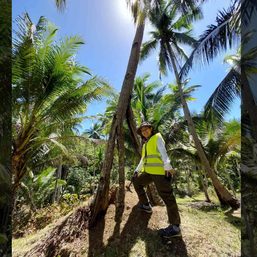SUMMARY
This is AI generated summarization, which may have errors. For context, always refer to the full article.
![[ANALYSIS] Morocco Earthquake: What we can learn from it](https://www.rappler.com/tachyon/2023/09/tl-morocco-earthquake.jpg)
Earthquakes, again? Until the dynamism of the earth ceases to exist, earthquakes will persist – an unfortunate reality, as such phenomena are among the most destructive and fatal of natural processes, especially when they hit populous communities living in non-earthquake resilient infrastructure.
Just after 11 pm Morocco time of Friday, September 8, a magnitude 6.8 earthquake struck the High Atlas Mountains some 60 kilometers to the south of the historical city of Marrakesh. Ground shaking was felt in areas as far away as Lisbon in Portugal, located some 800 km to the north. As of writing, more than 2,000 persons have been killed, but many more are feared dead and injured as search and rescue missions are hampered by difficulties in accessing the affected communities in the mountainous region.
Why Morocco is earthquake-prone
The High Atlas Mountains of Morocco is a product of the interaction between the African and European continents. Because of the dynamism of the earth expressed through Plate Tectonics, Africa is slowly pushing itself northwards towards Europe. The two tectonic plates upon which these continents ride – namely the African Plate and Eurasian Plate, which are almost of the same density – push against each other, resulting into the formation of mountain ranges, among them the High Atlas Mountains. Within the mountain range are faults – deep fractures penetrating for kilometers into the earth, whose motions allow the crust to adjust as the collision proceeds. Think two sedan cars colliding with each other head on. The result would be buckled hoods on each car simulating mountain ranges, with the depression between them representing the surface manifestation of the fault defining the contact between the two cars.
A consequence of the collision between the African and Eurasian plates are earthquakes along and near the boundary where these two plates meet. Morocco is unfortunately located at this boundary. To a lesser degree, the Halcon Mountain Range in Mindoro is the product of the collision between what geologists refer to as the Palawan Microcontinent, where famous tourist destinations such as El Nido or Coron Island are sitting, and the western section of the main Philippine archipelago from Batangas to Panay. This explains why Southern Batangas, Mindoro, Panay, and Negros are prone to earthquakes. These islands also host famous tourist destinations, especially along their coastlines – Boracay for one in northwestern Panay.
Earthquakes are produced when faults move. Faults that have shown evidence of movement in the last 10,000 years are called “active.” In some cases, such active faults leave clear marks on the surface of the earth, such as the San Andreas Fault in California, USA; the East Anatolian Fault in Turkey; or the Digdig Fault in Luzon, Philippines – all three having generated their own catastrophic earthquakes in the last 100 years. But in other cases, the faults do not leave clear manifestations on the surface – hence, the term buried or blind.
Buried reverse fault?
While scientists continue to pursue studies to pinpoint the culprit fault in Morocco, it appears to be buried, since there has so far been no indication of a clear surface rupture. One tool to study buried faults is interferometric analysis of satellite images of the area struck by an earthquake. This technique involves comparing distances between a satellite and the ground surface using images gathered before and after an earthquake. It allows to determine by how much (in distance) and in which direction the surface of crustal blocks separated by an unseen fault have moved relative to each other. Initial interferometric analysis of satellite data for the Morocco earthquake suggests a fault plane that is inclined to the north, with the northern block moving upwards with respect to the southern block. Such motion along a fault plane is called reverse (or thrust) faulting. It is the same fault mechanism that caused two earthquakes that struck Abra in July and October 2022.
Earthquake resilience and the Big One
As of writing, more than 300,000 individuals have been affected by the Morocco earthquake, with thousands of establishments damaged, many of which completely pulverized to rubble. On July 27, 2022, a magnitude 7.0 earthquake struck the province of Abra in Luzon. Like the Abra earthquake, the source of the Morocco temblor is relatively shallow. This explains the strong ground shaking experienced at the surface, causing intense damage to infrastructure, especially when such are not designed to sustain intense shaking. Although the energy released by the Abra earthquake was almost three times larger than the Morocco earthquake, the latter caused much more intense infrastructure damage and more deaths than the former. While this may sound good news for Philippine earthquake resilience managers, the degree of infrastructure damage and number of casualties are functions of not only the magnitude but also of other factors such as distance to the epicenter, conditions of the subsoil, compliance to building codes, and even the time when the temblor strikes.
And what if the Big One strikes in Metro Manila? Models suggest that the West Valley Fault that traverses most of the eastern section of the metropolis can generate an earthquake of magnitude 7.5, about 18 times stronger than the magnitude 6.8 Morocco earthquake. Are Metro Manilans ready?
As I write the last phrases of this piece, a magnitude 6.3 earthquake hit Batanes, as if to reaffirm the continued dynamism of the earth and to remind every individual of the importance of readiness for and resilience against earthquakes.
Mario A. Aurelio, PhD is a professor at the University of the Philippines and teaches at the National Institute of Geological Sciences in UP Diliman, and is the head of the institute’s Structural Geology and Tectonics Laboratory. Among his research interests is the study of earthquakes. He is among the Top 100 Asian Scientists for 2023.
1 comment
How does this make you feel?








Thanks to Prof. Mario A. Aurelio for this “mind-shaking” article. Firstly, I hope that in his succeeding article, he will explain why “an earthquake of magnitude 7.5, (is) about 18 times stronger than the magnitude 6.8 Morocco earthquake.” Secondly, it would be very informative if he can comment about that part of the latest National Disaster Risk Reduction and Management plan which deals with earthquakes. Looking forward to his next writings on the subject matter.